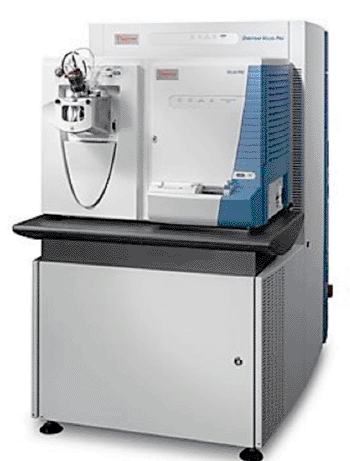Standardized Assays Developed to Quantify Human Proteins
By LabMedica International staff writers
Posted on 30 Dec 2013
The feasibility of large-scale standardized protein measurements, which are necessary for validation of disease biomarkers, has been developed. Posted on 30 Dec 2013
Multiple reaction monitoring (MRM) mass spectrometry has been successfully applied to monitor targeted proteins in biological specimens, raising the possibility that assays could be configured to measure all human proteins.

Image: Orbitrap Velos Pro hybrid ion trap mass spectrometer (Photo courtesy of Thermo Scientific).
Scientists at the Fred Hutchinson Cancer Research Center (Seattle, WA, USA) in collaboration with other intuitions targeted a protein-detection approach that has the potential to systematically and reliably measure the entire human repertoire of proteins, known as the proteome. The MRM technique can simultaneously and precisely detect the abundance of hundreds of proteins in many different samples. The teams of investigators were able to reproduce measurements of 319 proteins from human breast cancer cells, showing that the method can be standardized across laboratory and international boundaries.
This method enabled highly specific, precise, multiplex, quantification of a minimum of 170 proteins in 20 clinical samples per instrument per day— no other existing technology has this power. Because the mass spectrometry technique is targeted, meaning the scientists can tune the instruments to look for a specific subset of proteins in cancer cells or other sample types, it can detect the presence of proteins of interest at much lower levels in minute blood samples or biopsies than a nontargeted tactic.
Amanda Paulovich, MD, the senior author of the study, said, “This method has the potential to completely revolutionize how we measure human proteins. Having a global resource for standardized quantification of all human proteins would set new standards that would undoubtedly increase the reproducibility of preclinical research, which would have a dramatic impact on the translation of novel therapeutics and diagnostics. Right now, you can't make robust measurements of most human proteins. More than 10 years after the human genome has been sequenced and we have the full catalog of molecules as important as proteins, we still can't study the human proteome with any kind of throughput in a standardized, quantitative manner.” The study was published on December 8, 2013, in the journal Nature Methods.
Related Links:
Fred Hutchinson Cancer Research Center














